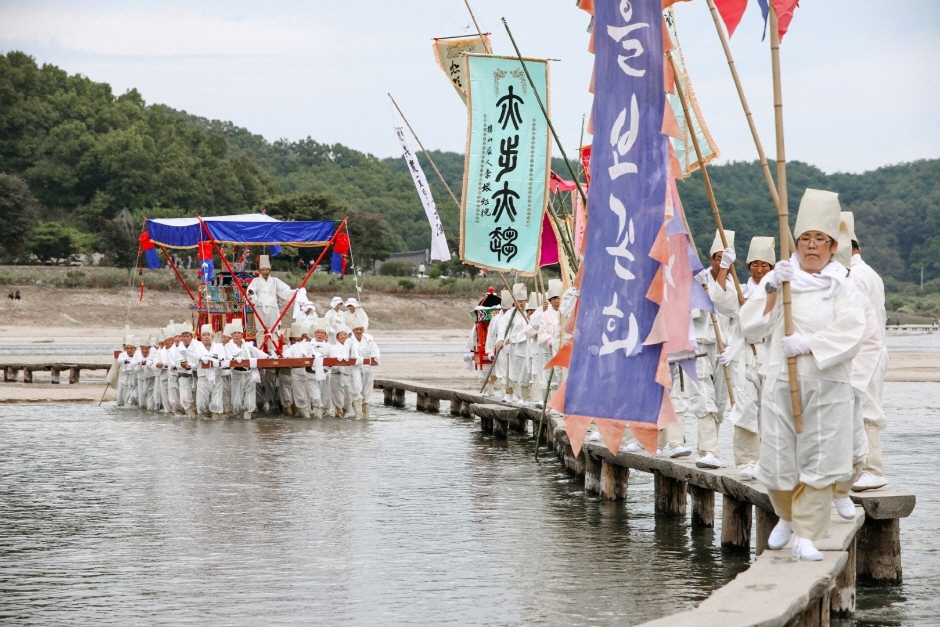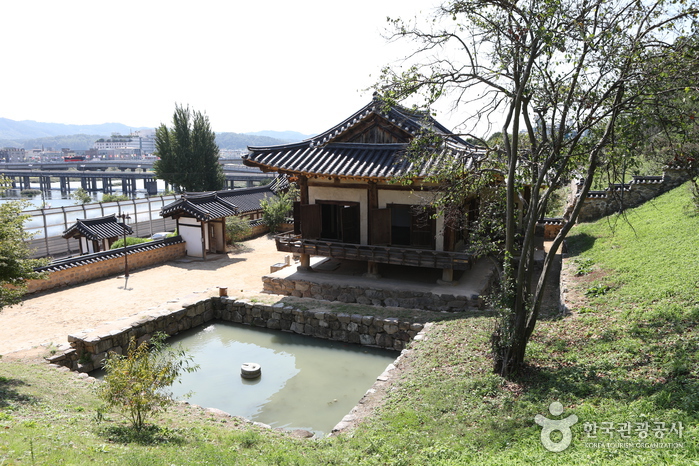Festival del Puente de Troncos de Museom en Yeongju (영주무섬외나무다리축제)
19.7Km 2024-09-13
Sudo-ri 243-1, Munsu-myeon, Yeongju-si, Gyeongsangbuk-do.
054-630-8709
Los arroyos que la rodean dieron nombre a esta aldea: Sudori, o también Museom. Desde lejos se ve como una península, en la que se encuentran 9 tesoros culturales que constituyen una aldea con tradiciones antiguas del país. El Festival del Puente de Troncos es celebrado en cada otoño, y el camino del puente es seleccionado por el gobierno como uno de los 100 Mejores Caminos de Corea. Con la finalidad de levantar otra vez las tradiciones que se perdieron, este festival se celebra cada año con muchas actividades y eventos tradicionales.
Imyeonjae Head House [Korea Quality] / 흥해배씨 임연재종택 [한국관광 품질인증]
19.9Km 2020-09-03
51, Hyanggyo 1-gil, Andong-si, Gyeongsangbuk-do
+82-10-9077-7216
The Lim Yeon-Jae Head House of Heunghae Bae's Clan was built by Bae Cheon-Seok (1511~1573), Vice Minister of War, in 1558 in Domok-ri, Wolgok-myeon, Andong but was moved to its current location in Songcheon-dong, Andong in 1973 due to the construction of Andong Dam. The house has inherited the tradition of Baekjukdang Bae Sang-Ji (1351~1413) who refused to serve two kings out of loyalty to the Goryeo Dynasty. Bae Sang-Ji is the first ancestor of Heunghae Bae's Clan who settled in Andong. The Lim Yeon-Jae Head House was designated for the permanent worship of the spirit of Governor Bae Sam-Ik (1534~1588, pen name: Lim Yeon-Jae, nickname: Yeowoo) who was the son of Bae Cheon-Seok and a student of Toegye Yi Hwang and who served as the Governor of Hwanghae-do after passing the civil service examination. The house was nicknamed Geumyeokdang after the pen name of Bae Yong-Gil (1556~1609, nickname: Myeongseo), who was a son of Lim Yeon-Jae and who served as secretary of Chungcheong-do Province after passing the civil service examination and fought as a member of the army for the cause of justice during Japan’s invasion of Korea in 1592. With the antique charm of a traditional Korean house, the Lim Yeon-Jae Head House boasts of beautiful walls, stairs, eaves, etc. The windows and doors of the house decorated in the construction style of the early Joseon Dynasty are especially beautiful. In the head house is the time-honored space used as a study since the establishment of the house, which has been opened recently as a little library to accommodate the neighbors who love reading by inheriting the tradition of the house with a collection of many books and opening a bookstore. The little library of Baekjuk Historic House is furnished with more than 5,000 books in different genres including novel, humanities, history, cartoons, and books for infants. You can enjoy time travel to the past through the experience of the old house and by reading books in the library. An air-conditioning/heating system has been installed in every room, with communal bathrooms equipped with the latest facilities positioned here and there in the house for the convenience of visitors.
Residencia Tradicional Imcheonggak en Andong (안동 임청각)
20.0Km 2023-02-22
Imcheonggak-gil 63, Andong-si, Gyeongsangbuk-do.
Imcheonggak es una de las casas tradicionales existentes más grandes de Corea, posee una historia de 500 años, y pertenece a la familia Lee de Goseong, en Andong. Es una casa elegante, con el tejado tradicional, que poseía 99 habitaciones, aunque más de la mitad fue derrumbada durante el período de la invasión japonesa. Perteneciendo a una familia de clase alta de la Época Joseon, presenta una amplia variedad de instalaciones anexas, varias subconstrucciones, pabellones, y un hermoso jardín. La casa fue construida por el 6º hijo de un funcionario de importante cargo que correspondía al reinado de Sejong (1418-1450) en la época de Joseon, quien fascinado por la belleza natural de la zona, había decidido instalarse en el lugar. Luego con el tiempo, los hijos de los hijos, han extendido la casa y habían levantado más construcciones anexas, edificaron más instalaciones, pabellones, etc.

![Imyeonjae Head House [Korea Quality] / 흥해배씨 임연재종택 [한국관광 품질인증]](http://tong.visitkorea.or.kr/cms/resource/84/2627384_image2_1.jpg)

 Español
Español
 한국어
한국어 English
English 日本語
日本語 中文(简体)
中文(简体) Deutsch
Deutsch Français
Français Русский
Русский